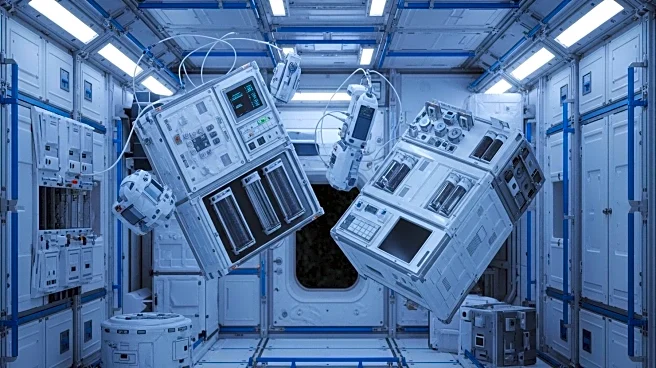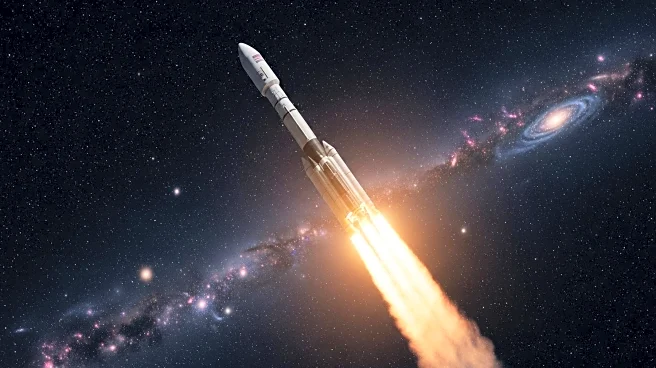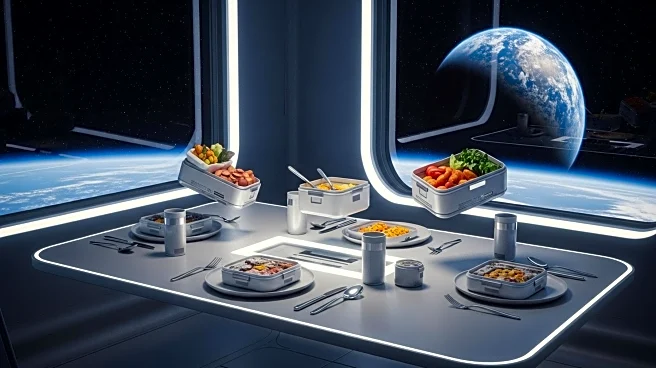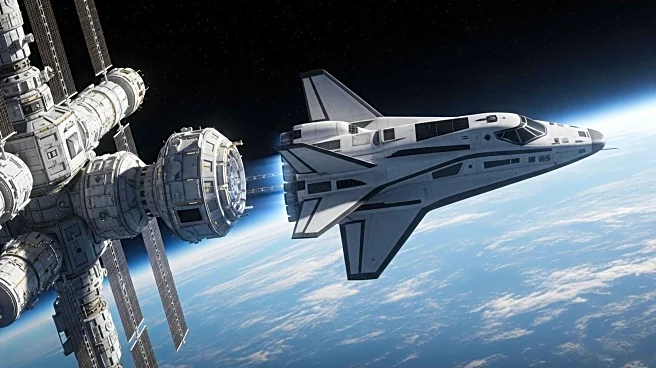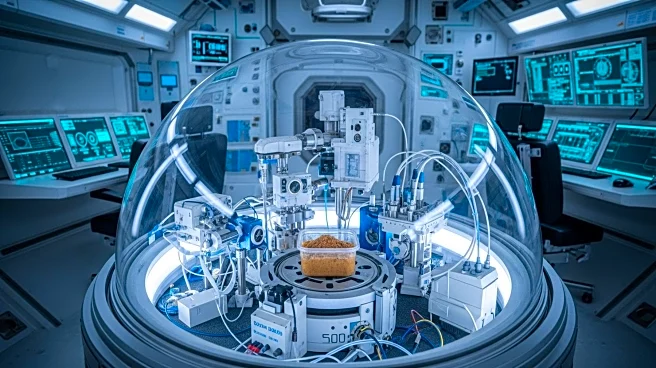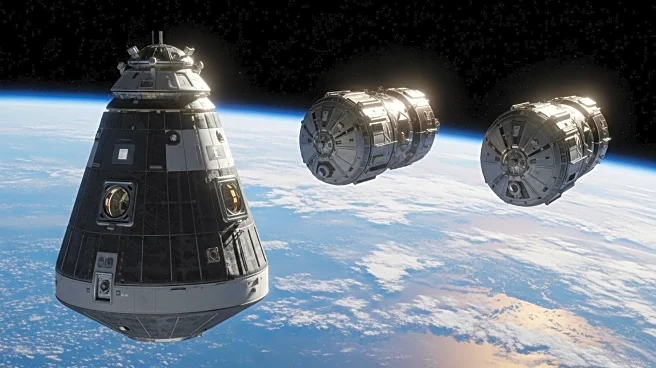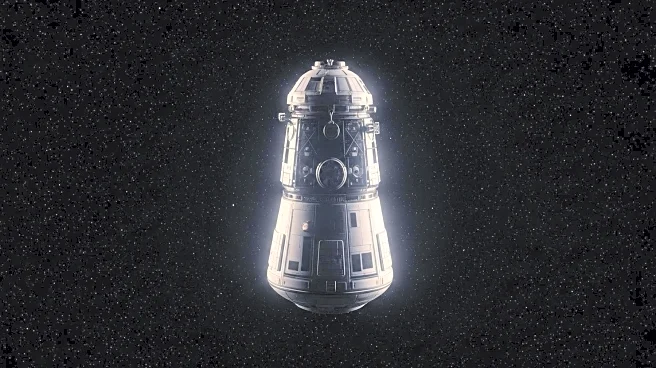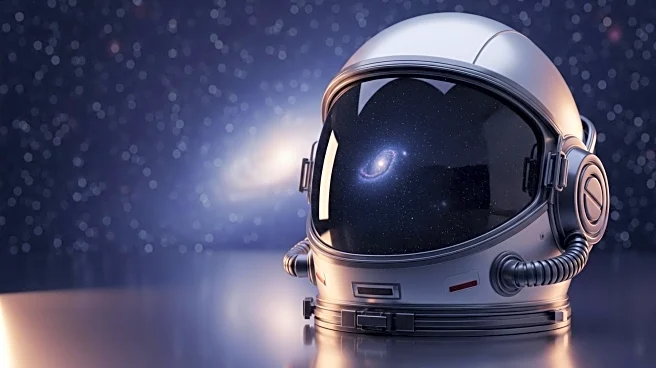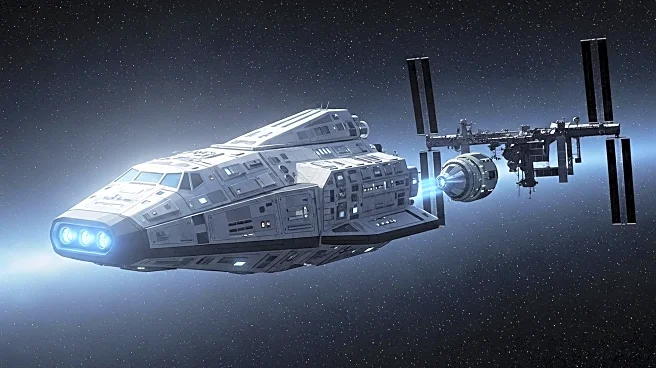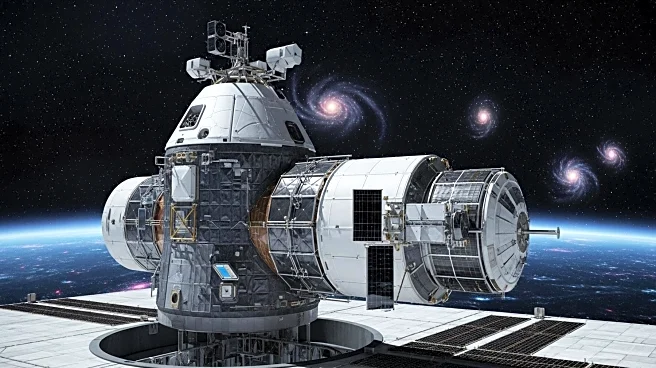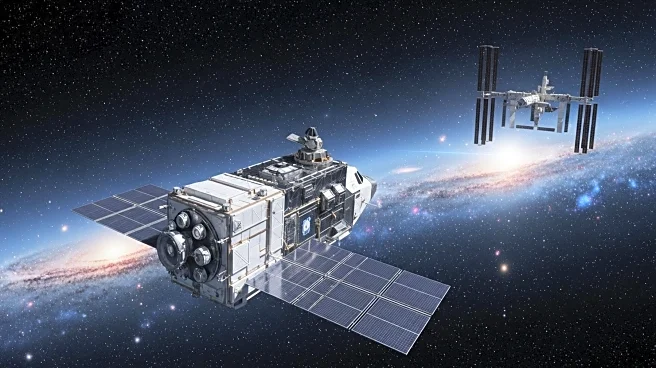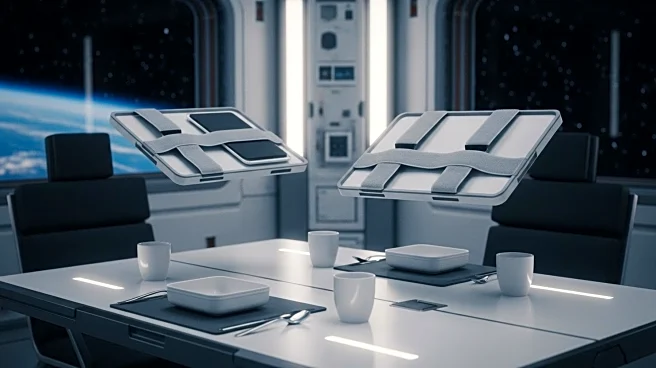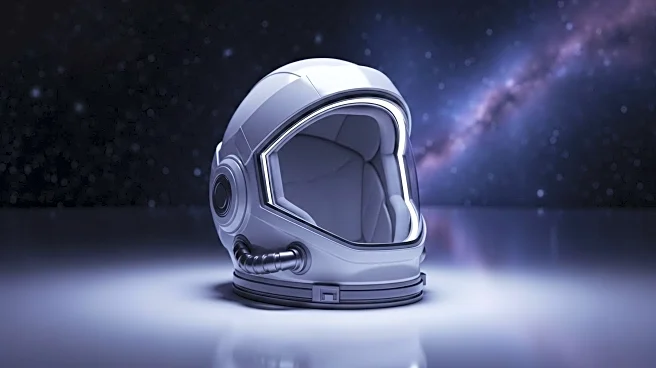What is the story about?
What's Happening?
The Expedition 73 crew aboard the International Space Station (ISS) is engaged in a series of scientific experiments aimed at improving astronaut health during long-duration space missions. NASA astronaut Mike Fincke is leading a bio-nutrients experiment involving purple kefir, a fermented milk drink, to explore ways to produce additional vitamins and nutrients. This research is part of the BioNutrients-3 project, which seeks to enhance the health of future space crews. Other experiments include studies on eyesight and balance using VR goggles and specialized optical equipment, as well as monitoring arterial stiffness and cardiac function. The crew is also preparing for the arrival of Northrop Grumman's Cygnus cargo craft, scheduled for docking on September 17, 2025.
Why It's Important?
These experiments are crucial for understanding and mitigating the health challenges faced by astronauts during extended space missions. The ability to produce essential nutrients in space could significantly improve crew health and performance, reducing reliance on Earth-supplied resources. This research supports future missions to the Moon and Mars, where long-term sustainability will be key. The studies on eyesight and balance are particularly important, as they address common issues experienced by astronauts due to microgravity. Successful outcomes could lead to improved health protocols and technologies for space travel, benefiting both current and future missions.
What's Next?
The crew will continue their scientific research and prepare for the arrival of the Cygnus cargo craft, which will bring additional supplies and equipment. The results of the ongoing experiments will be analyzed to inform future space missions and health strategies. As the ISS remains a hub for international collaboration, findings from these studies may influence global space exploration efforts. The crew's activities also include maintaining the station's systems and ensuring readiness for upcoming research projects.
Beyond the Headlines
The use of amateur radio by JAXA astronaut Kimiya Yui to communicate with children in Japan highlights the cultural and educational outreach of space missions. Such interactions inspire future generations and promote international cooperation in space exploration. The experiments on plant cell division and algae growth contribute to the broader goal of developing sustainable agricultural practices for space habitats, which could have implications for food security on Earth.
AI Generated Content
Do you find this article useful?
